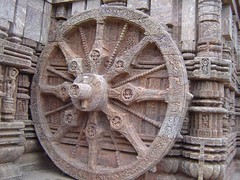Sharpe & Treynor Ratio of Mutual funds
Sharpe Ratio
This ratio measures the ratio of return earned in excess of the risk free rate (normally Treasury instruments) on a portfolio to the portfolio's total risk
Portfolio risk is measured by the standard deviation in its returns over the measurement period. In other words it tells you how much better did you do for the risk assumed.
It is measured by: (Portfolio return - Risk free return)/Std deviation of portfolio
The Sharpe ratio is an appropriate measure of performance for an overall portfolio particularly when it is compared to another portfolio, or another index such as the Nifty, Mid cap index etc.
It tells us whether the excess return generated was due to smart investment or was due to a very high risk taken by the fund manager.
Treynor ratio
This ratio is similar to the above except it uses beta instead of standard deviation.
It's also known as the Reward to Volatility Ratio.
It is the ratio of a fund's average excess return to the fund's beta.
It measures the returns earned in excess of those that could have been earned on a riskless investment per unit of market risk assumed.
It is measured by : (Avg Portfolio return - Avg risk free return)/beta of portfolio
Notes:
It would be useful to remember that any portfolio consists of two types of risks - systemic or market risks and non systemic risks.
Systemic or market risks represents the movement in portfolio due to movement in the market. This relation between the portfolio and the market movement is what is measured by beta. Hence Treynors measure measures the excess return per unit of systemic risk taken.This is the reason why it is generally said that Treynors' measure is a good approach to evaluate well diversified portfolio.
Non systemic risks represents scrip specific risks.This is represented by the standard deviation of the portfolio. Hence sharpe measure uses this to measure the excess return generated per unit of risk of the portfolio itself. If you have a non diversified portfolio then it doesnt make any sense to compare it with the market indices because the movement of the scrip will rarely be influenced or will have no direct linkage to movement in indices.
What is "Alpha"
This is the difference between a fund's actual return and those that could have been made on a benchmark portfolio with the same risk- i.e. beta.
So it is basically used to measure the relative performance of two funds having the same beta. i.e. comparing apples to apples. This gives a reasonable good measure of a fund manager's performance and could be used for devising incentive strategies for the fund manager
Hope you found the above useful
This ratio measures the ratio of return earned in excess of the risk free rate (normally Treasury instruments) on a portfolio to the portfolio's total risk
Portfolio risk is measured by the standard deviation in its returns over the measurement period. In other words it tells you how much better did you do for the risk assumed.
It is measured by: (Portfolio return - Risk free return)/Std deviation of portfolio
The Sharpe ratio is an appropriate measure of performance for an overall portfolio particularly when it is compared to another portfolio, or another index such as the Nifty, Mid cap index etc.
It tells us whether the excess return generated was due to smart investment or was due to a very high risk taken by the fund manager.
Treynor ratio
This ratio is similar to the above except it uses beta instead of standard deviation.
It's also known as the Reward to Volatility Ratio.
It is the ratio of a fund's average excess return to the fund's beta.
It measures the returns earned in excess of those that could have been earned on a riskless investment per unit of market risk assumed.
It is measured by : (Avg Portfolio return - Avg risk free return)/beta of portfolio
Notes:
It would be useful to remember that any portfolio consists of two types of risks - systemic or market risks and non systemic risks.
Systemic or market risks represents the movement in portfolio due to movement in the market. This relation between the portfolio and the market movement is what is measured by beta. Hence Treynors measure measures the excess return per unit of systemic risk taken.This is the reason why it is generally said that Treynors' measure is a good approach to evaluate well diversified portfolio.
Non systemic risks represents scrip specific risks.This is represented by the standard deviation of the portfolio. Hence sharpe measure uses this to measure the excess return generated per unit of risk of the portfolio itself. If you have a non diversified portfolio then it doesnt make any sense to compare it with the market indices because the movement of the scrip will rarely be influenced or will have no direct linkage to movement in indices.
What is "Alpha"
This is the difference between a fund's actual return and those that could have been made on a benchmark portfolio with the same risk- i.e. beta.
So it is basically used to measure the relative performance of two funds having the same beta. i.e. comparing apples to apples. This gives a reasonable good measure of a fund manager's performance and could be used for devising incentive strategies for the fund manager
Hope you found the above useful



